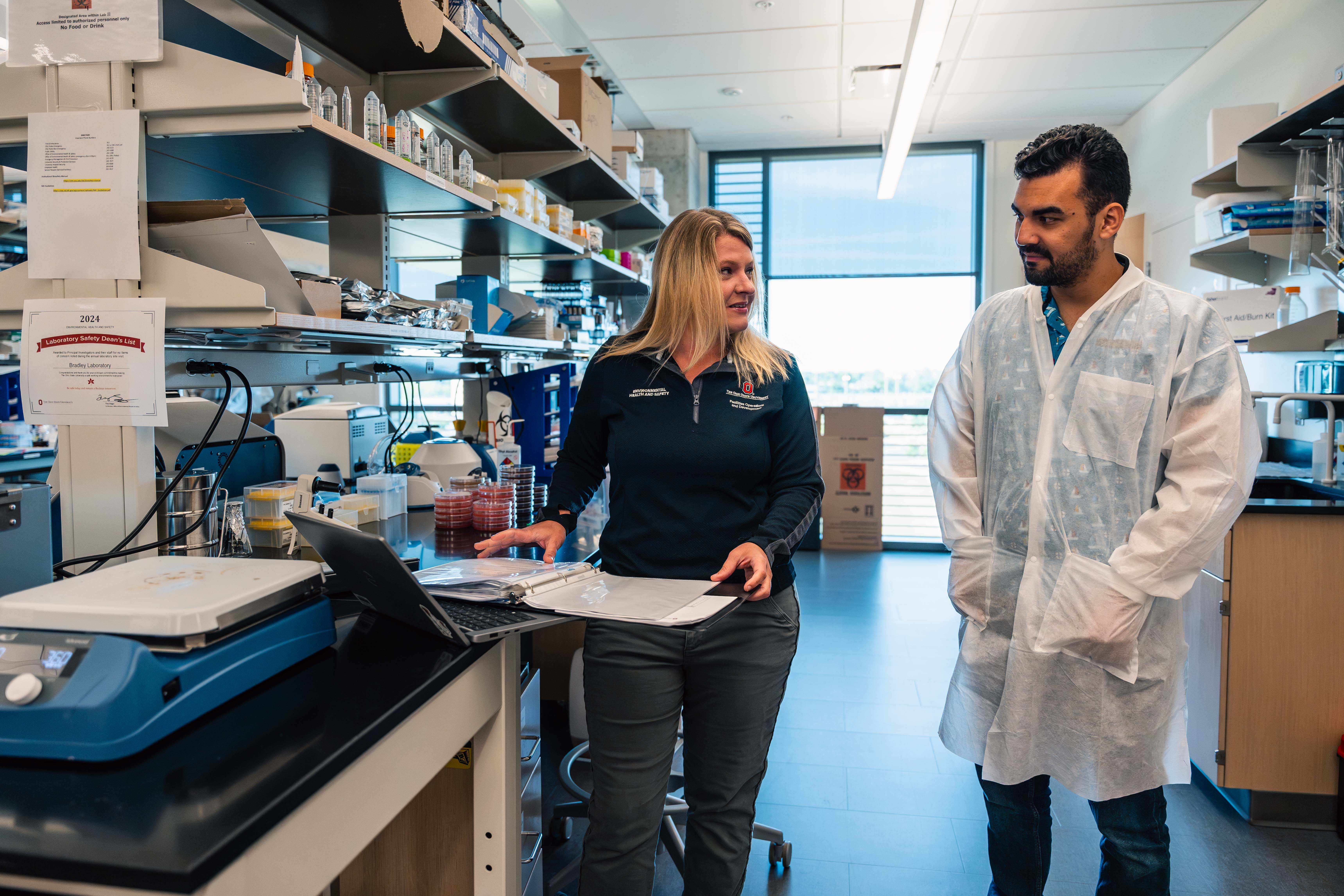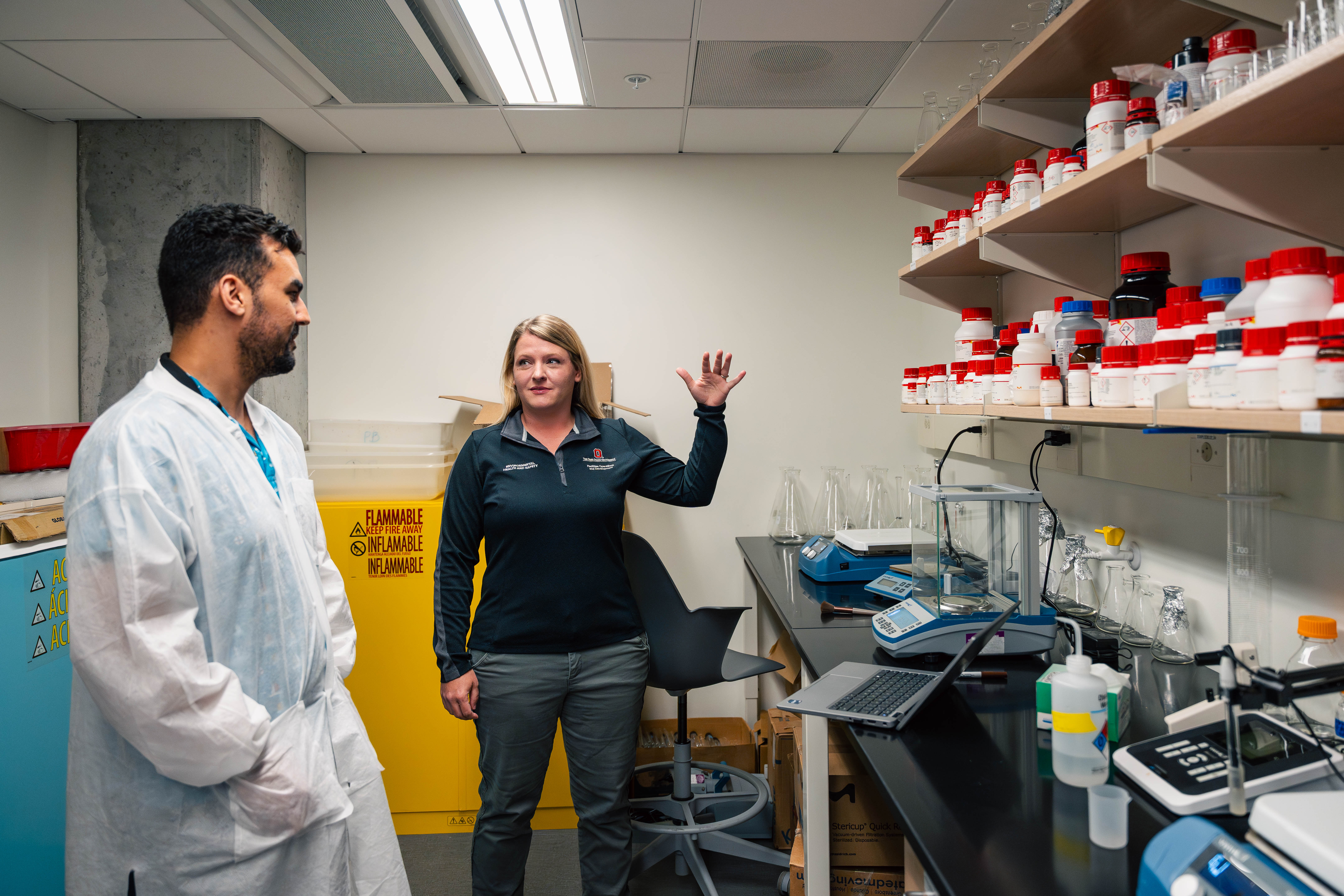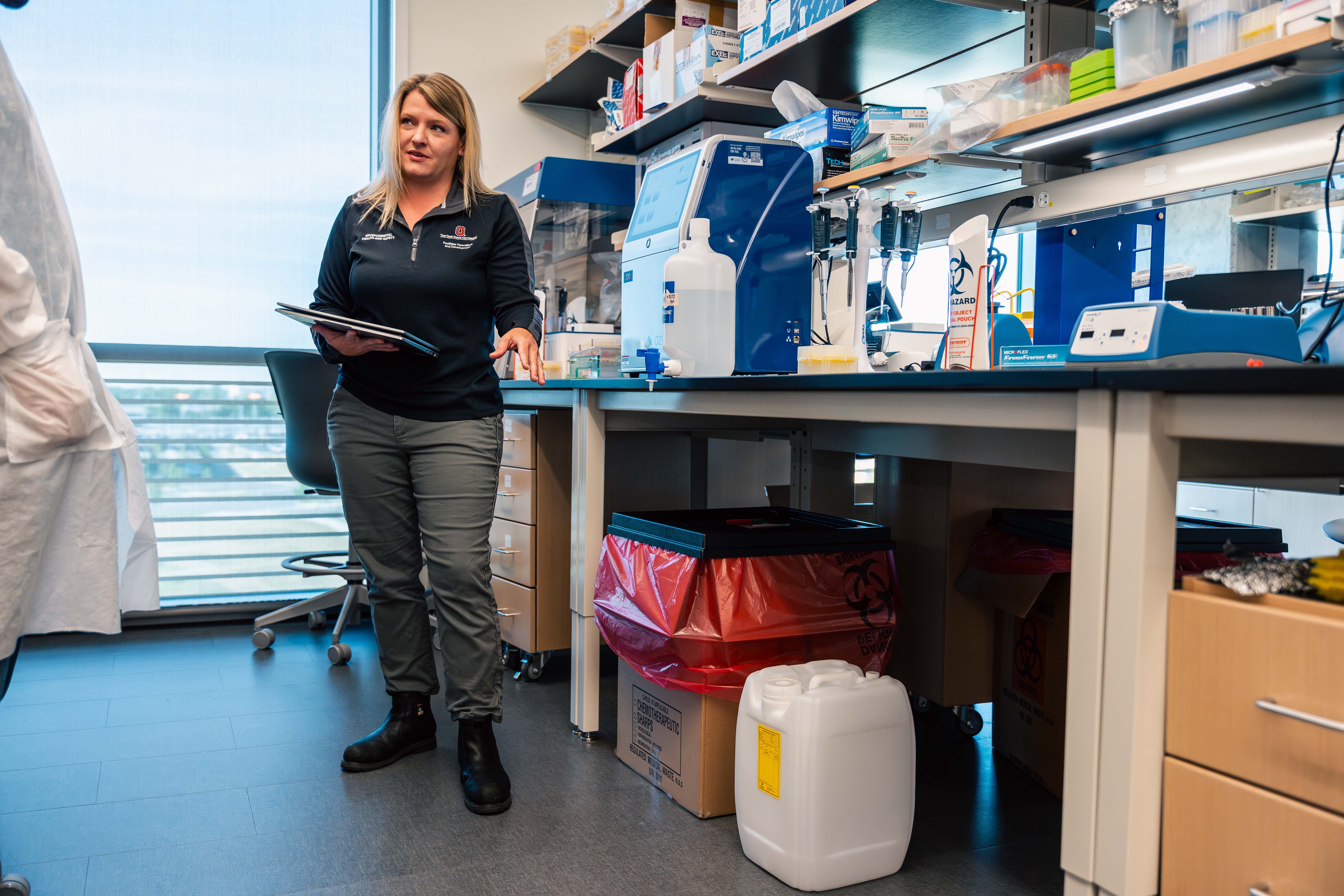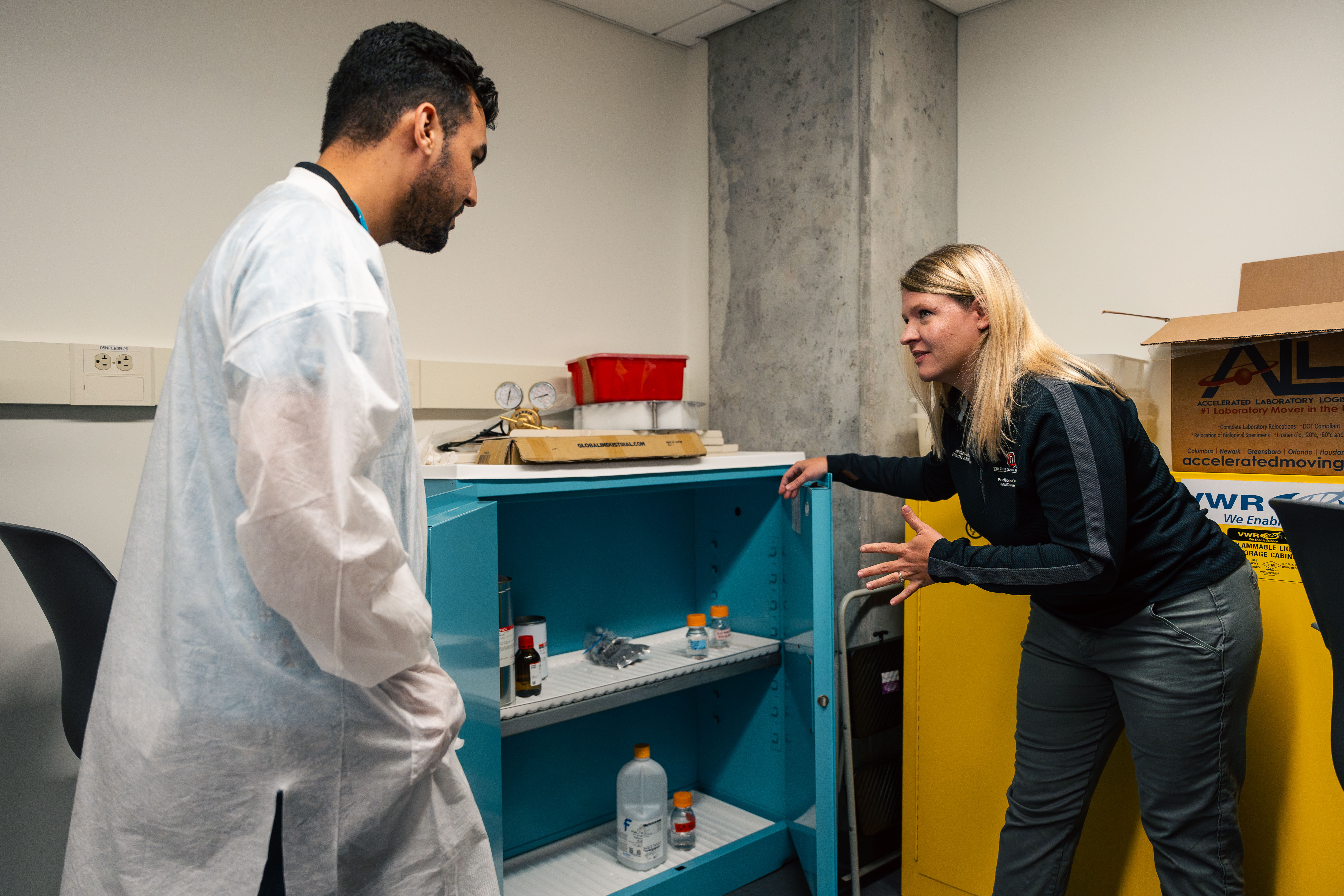Environmental Health and Safety (EHS) works with nearly 2,900 locations across The Ohio State University to ensure facilities, including workshops and laboratories, are being conducted in a safe and healthy way. From ensuring chemicals are being disposed of properly, to checking for radiation contamination, the team is trained to look for several different hazard types in each space.
Jenna Dickerson is the Laboratory Safety Program Manager for EHS and says while there are many intricate details to her position, the focus remains the same. “Our motto is stay safe today, remain a Buckeye tomorrow,” said Dickerson.
Each facility is inspected at least annually, if not more. When Dickerson arrives to a lab for a site safety visit, she meets with a lab member to check administrative controls, documentation and training to make sure they’re sufficient for the studies they’re conducting.
Next up, checking chemical inventories. She has the researcher walk her through the chemicals on-site and make sure what they have is entered in the EHS database correctly. Chemicals must be segregated appropriately, and the containers should be in good shape. Proper storage of chemicals is important, including not storing non-compatible chemicals together and making sure flammable liquids, acids and bases are stored in their respective cabinets.
If the space has specialized equipment, it’s inspected. Dickerson makes sure both administrative and physical controls on the equipment are appropriate for the work being done and that there are no additional hazards in the space.
As Dickerson is going through each detail, she takes time to educate the researcher and connect with them over their work. She says a big part of her job is identifying risks then communicating about how to mitigate them.
“I love helping people achieve what they’re here to do and complete their jobs safely,” said Dickerson. “They’re here to focus on their education and science, so it’s my responsibility to be a resource for them on how to do the work safely. Our people-first approach is the best.”
The team moves on to checking safety equipment and personal protective equipment, or PPE. From checking for proper gloves and lab coats and goggles to checking the water pressure at the eye wash station and shower, a safe atmosphere is maintained.
The team is trained to ensure work with radioactive materials is done safely and according to the Ohio Department of Health license. When visiting labs working with radiation, they’re verifying inventories and making sure all radioactive material is secure from unauthorized access, making sure researchers are following their own procedures and checking for contamination. A survey meter is used to slide over a surface to detect any radiation, while swabs can also be used to take back to a separate lab and test for any contamination.
Finally, she checks for proper waste disposal. Researchers are trained to label every waste container with its contents to ensure no chemical reactions occur. Infectious waste must be segregated and disposed of in approved biohazard boxes and sharps containers.
Dickerson ends her visit by giving the lab member a packet full of helpful information, safety posters and instructions on how to use the EHS website and resource page. A report is generated for the lab identifying areas where improvement is needed. Each quarter a lab safety scorecard is developed for each college/administrative unit that EHS visits. The scorecard is distributed to Research Deans helping them to understand the great things their researchers are doing as well as where to focus their efforts for improvement.
While this specific site visit was in a laboratory, about 40% of research is done outside of a traditional lab. Dickerson and her team conduct visits in several environments including in the field where samples are collected, greenhouses, workshops and agricultural areas.
Research being done in an external environment may require additional safety checks including ensuring proper transportation of hazards, identifying non-routine hazards and making sure every aspect of research is being done safely and according to regulations.
It is EHS’ goal to make sure the university is providing a safe place to live, work and play.
Learn more about the work EHS does online.









